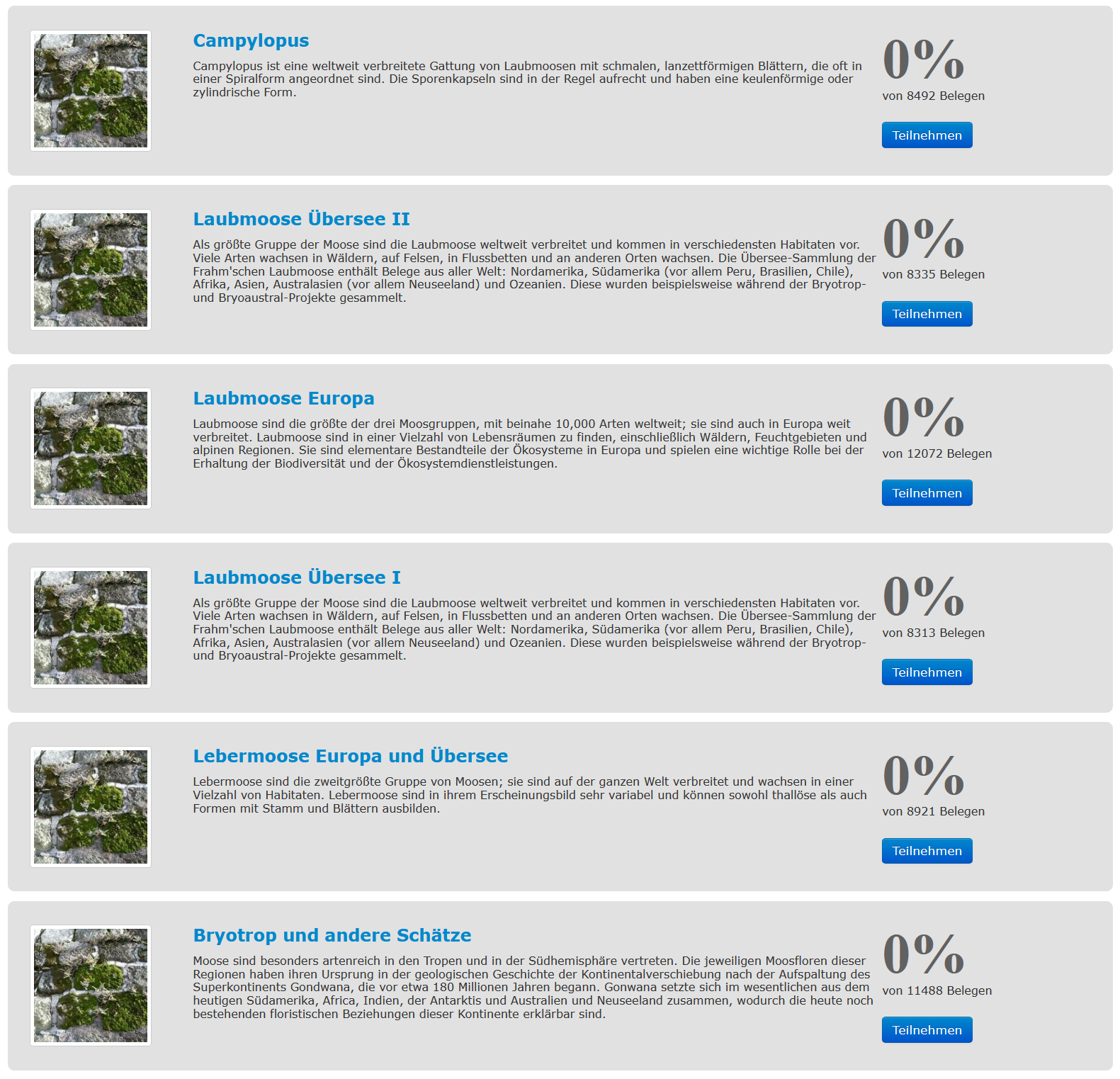Development of a virtual Frahm collection on the basis of 80,000 bryophyte specimens, transcribed and semantically enriched by Citizen Scientists
Project Coordinator
Bernard Goffinet, University of Connecticut, USA
Project Members
Bernard Goffinet, University of Connecticut, USA; Matt von Konrat, Field Museum, USA
BiCIKL Contact person
Anton Güntsch, Botanic Garden and Botanical Museum Berlin (BGBM)
BiCIKL Research Infrastructures involved
BGBM, MBG, COL
Non-BiCIKL Research Infrastructures accessed
N/A
Biodiversity data classes and services included
Specimens, Taxonomic checklists

Background
Bryophytes comprise about 20,000 species distributed among three major lineages: the mosses (Bryophyta), the liverworts (Marchantiophyta), and the hornworts (Anthocerotophyta). With an origin dating to around 450 million years ago, bryophytes represent an effective strategy alternative to that of the vascular plants for succeeding on land. Important bryophyte collections are found across all major herbaria around the globe, and the Global Biodiversity Information Facility (GBIF) currently contains about 16 million observational records, including 6.5 million digitised herbarium collections. These and other, not yet digitised collections are an indispensable testimony to the global biodiversity of bryophytes throughout the past three centuries.
The German botanist Jan-Peter Frahm (1945-2014) was one of the world's foremost bryologists, with expertise particularly in mosses and the genus Campylopus. Frahm was active in many areas of bryological research, including biodiversity inventories in tropical areas and the Southern Hemisphere (for instance the Bryotrop projects), but also the use of bryophytes in bioindication and other applied aspects. He published over 650 scientific papers and amassed a personal collection of over 80,000 specimens. After his death, the Frahm collection came to the herbarium of the Botanischer Garten of the Freie Universität Berlin (B), where it is being incorporated into the bryophyte collection, a process that will be concluded towards the end of 2022. This includes specimen remounting and digitization of specimen labels, recording skeleton data (barcode, taxonomic name etc.) into a preliminary database. However, to fully unlock the information contained in this highly diverse and important collection, additional label data need to be transcribed or established, particularly geocoordinates for mapping and unique identifiers, such as the combination of collector(s) and collecting number or other accessory numbers (e.g., exsiccatae numbers).
The objective of the present project is to obtain this information by tapping into the Herbonauten project of the Botanischer Garten as an important tool of citizen science.
Expected outcomes
The primary output of this project consists of partially transcribed and fully georeferenced label data for approximately 80,000 Frahm bryophyte collections, to be available through the Bo Virtual Herbarium, the GBIF portal and the Catalogue of Life. In addition, the project PIs envision a data paper in collaboration with experts at the Bo (Robert Lücking, Anton Güntsch), analysing the main aspects of the data unlocked through this project, such as global biodiversity and distribution patterns visible in this unique and important collection.
Results
The transcription and citizen scientists engagement workflow was tested and significantly improved during the implementation of this Open Call project. From the Henri Van Heurck Collection, over 4,428 records have been transcribed by 100 different citizen scientists. “Die Herbonauten” project amassed over 350,000 individual data contributions through citizen science efforts on more than 20,000 specimens. The DoeDat project has documented more than 1,500 taxa. The collections encompass specimens collected from more than 50 countries, providing a comprehensive view of global moss diversity.